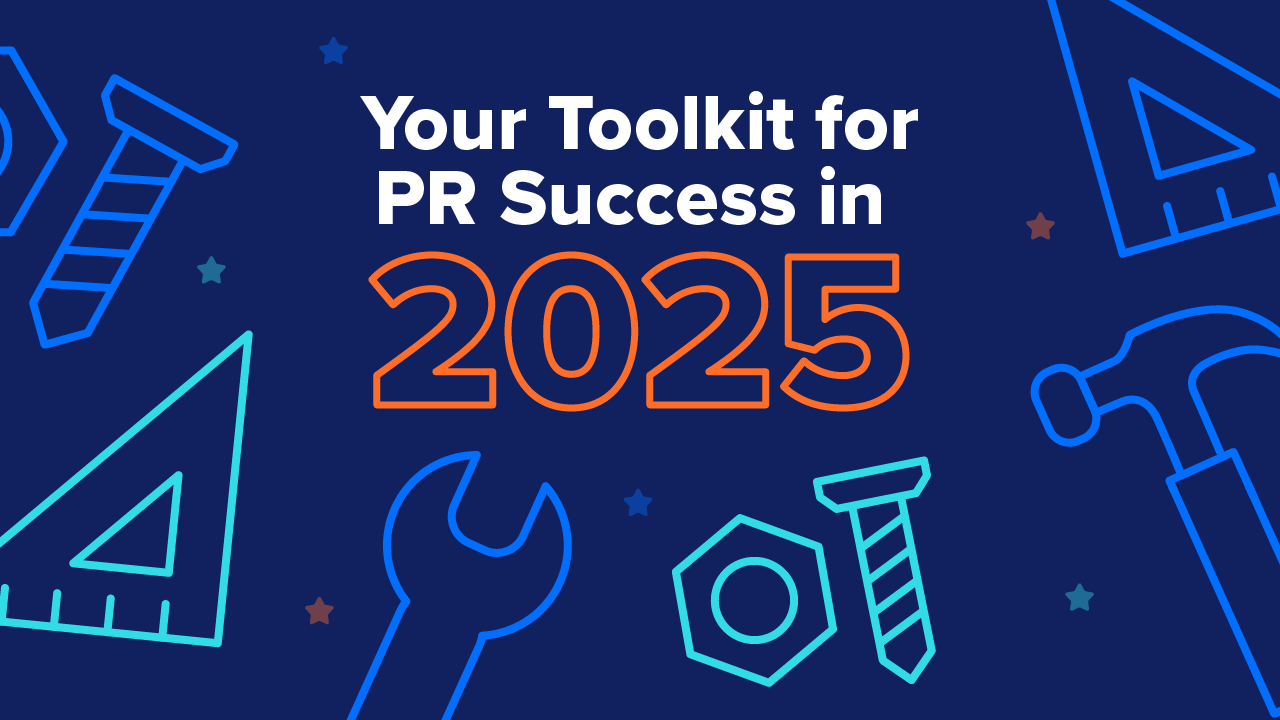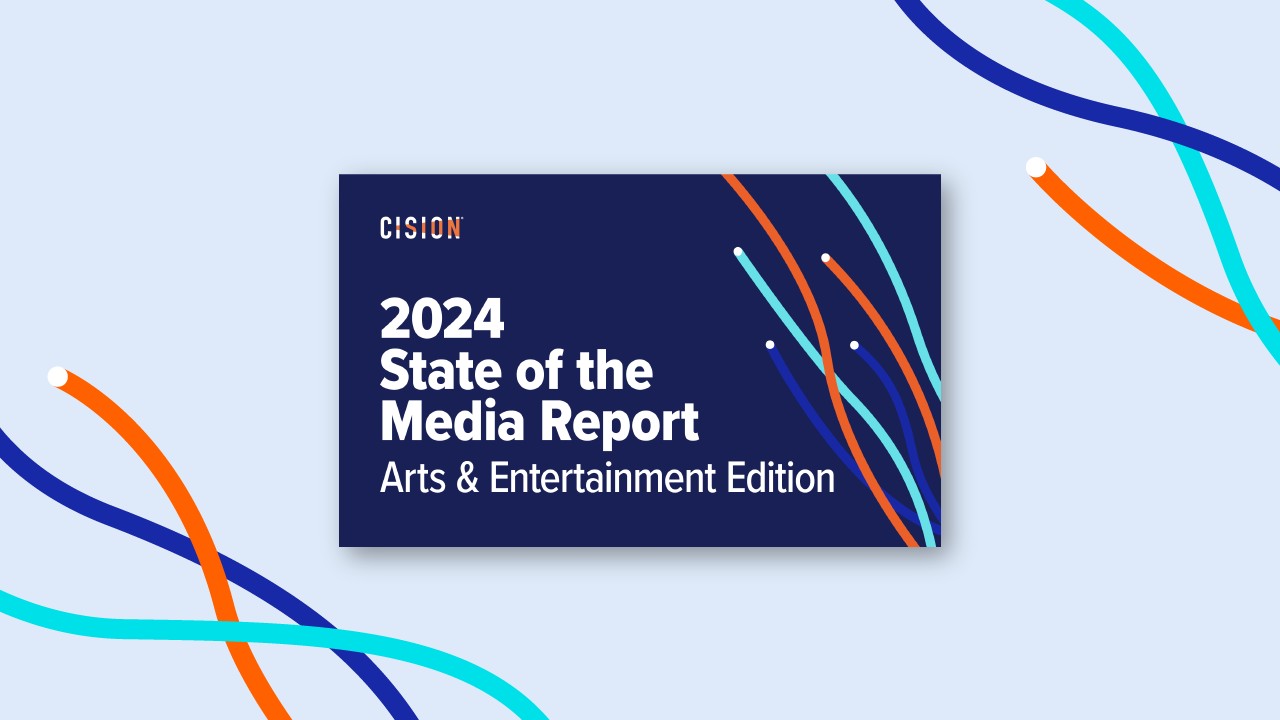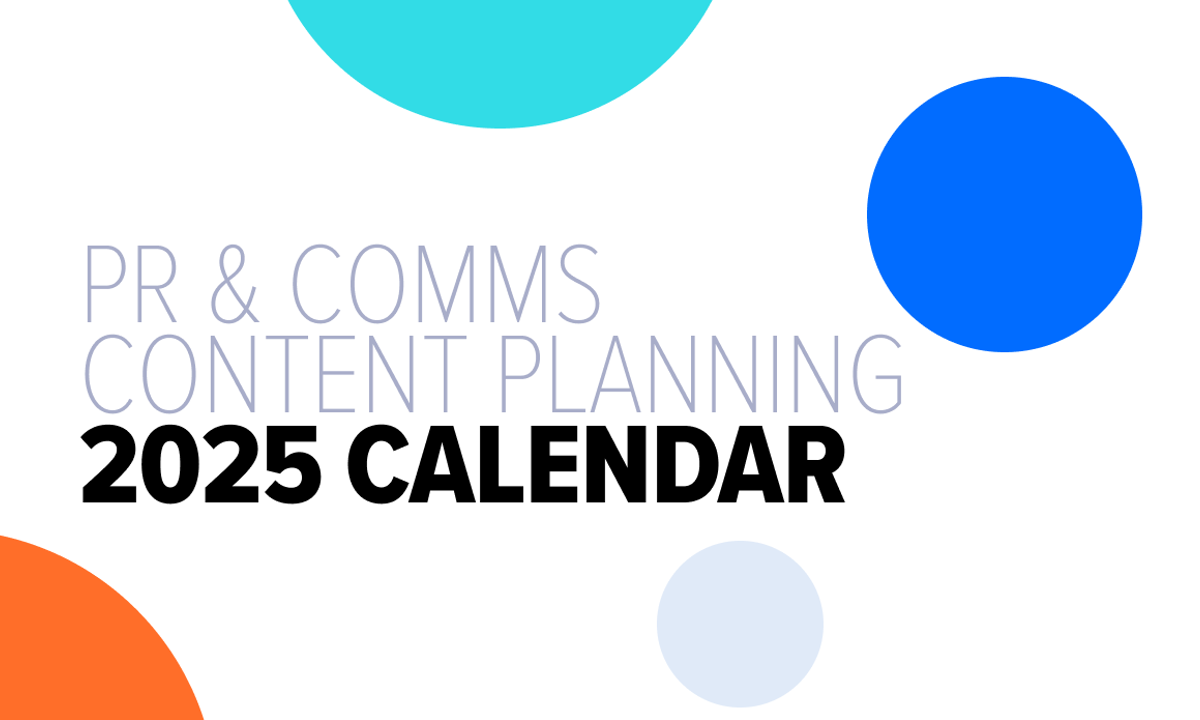While PR and communications professionals have long relied on metrics like Advertising Value Equivalency (AVE) to measure the success of their outreach efforts, many of these “traditional” metrics only tell part of the story.
In today’s multimedia-driven world, with myriad publishing platforms at our fingertips, there’s a whole world of data to measure and little time to sort through it all. Consequently, executives rely on PR and comms teams to provide strategic direction and guidance.
Finding measurable and comparable key performance indicators (KPIs) over time that reflect the work invested and the impact of that work is a central concern for PR professionals.
So, what’s the solution? Fortunately, thanks to recent technological advances, there are a variety of media monitoring tools that eliminate the tedious job of manual clipping and automatically track brand mentions, media coverage and countless other metrics for you. Even then, however, it is hard to pinpoint which metrics are the most important to measure.
To make it easy for you (and using CisionOne’s monitoring dashboard as a guide), we’ve outlined seven metrics that every communication professional should look to roll into their KPI reports.
1. Earned Media Mentions
Earned media is the visibility your business “earns” organically when mentioned in media sources like online, broadcast, print, social channels or even podcasts. By definition, your organization can’t create earned media directly, rather it’s generated through your reputation, word-of-mouth, and public relations efforts.
Once very difficult to calculate in practice, earned media is now easier than ever to track and benchmark for your KPIs thanks to today’s media monitoring platforms. As you’ll see in the graph below, now all you have to do is set the right keywords (in this instance, the name of your client, organization, or brand) to obtain a graph that shows the number of times your organization or product has been mentioned or quoted across various media.
Our anonymized soft drinks brand, Buzz Cola, achieved more than 140,000 mentions in a 30-day period, with the peak day seeing more than 10,000 mentions. Here you can also examine the breakdown by media to see what’s driving these mentions on a particular day.
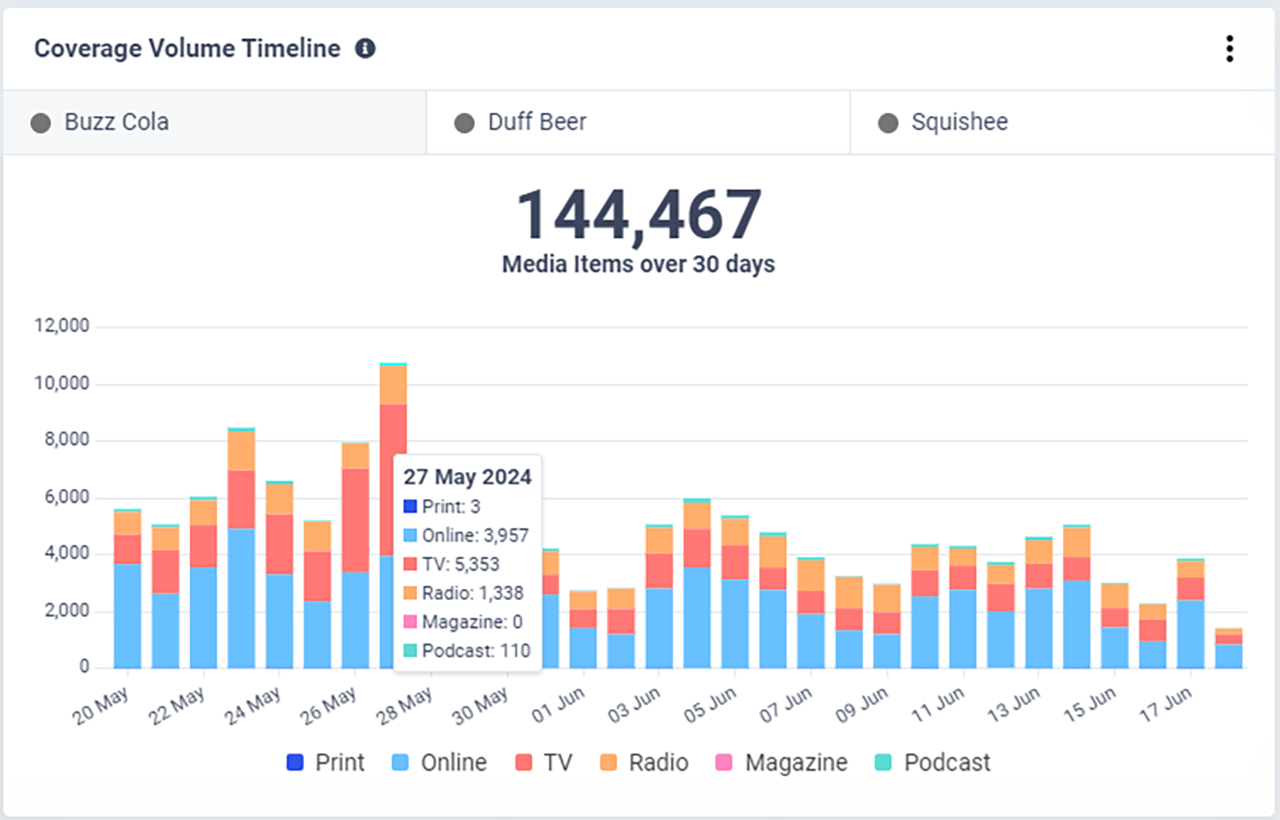
Earned media mentions are a measurable and comparable metric over time (we can compare the results of different PR campaigns), and it highlights the PR team's job of securing message positioning across media.
2. Potential Audience Reach
While earned media mentions can tell you how many items have been published, in isolation it doesn't tell you exactly how many people may have viewed the coverage.
That’s when combining mentions with reach can help. Potential reach refers to the total volume of people who could have potentially seen your message. Though it’s not an exact number, it looks at the circulation or audience of the media outlets, websites, or social media accounts where you secured mentions to create a figure.
From the CisionOne chart below you’ll see our earlier media mentions graph overlaid with a line signifying potential audience reach (and a number on the right-hand side).
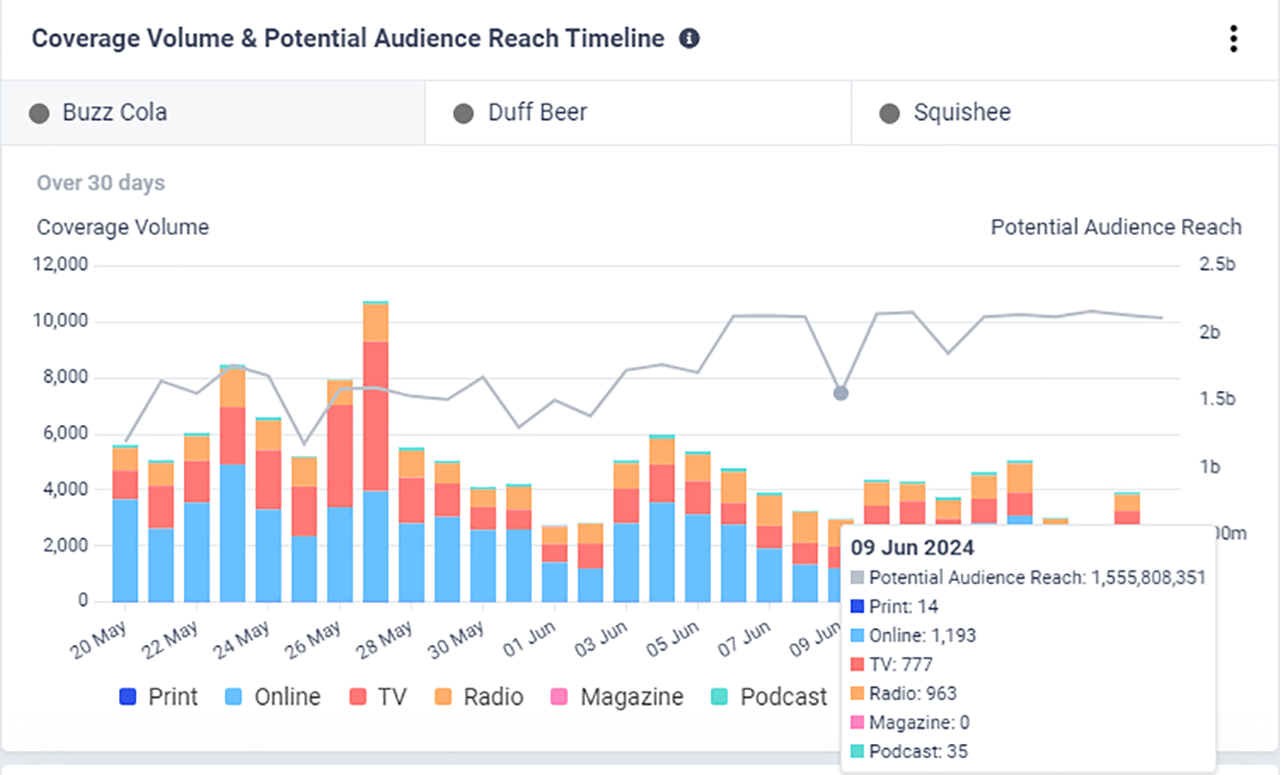
It’s worth remembering that getting coverage on a national newspaper’s website could have a higher potential reach than a mention on a small local TV station (hence why the mentions volume spike on May 27 doesn’t equate to a spike in reach).
However, the higher your potential reach is, the more visible your brand or product awareness will likely to be in the eyes of the public.
3. Coverage by Media Type
Your coverage by media type is a key indicator to measure the relevance of media channels. It is up to each organization to decide which media channels they favor, according to their target audience and personas, and the messages they want to communicate to those audiences. Demographic traits can change from one channel or media outlet to another.
This is a measurable metric that will allow organizations to understand the most effective media channels for generating brand awareness, and it is comparable over time. Below is an example from CisionOne showing the breakdown for online, TV, radio, podcast, print, and magazine, for our Buzz Cola brand.
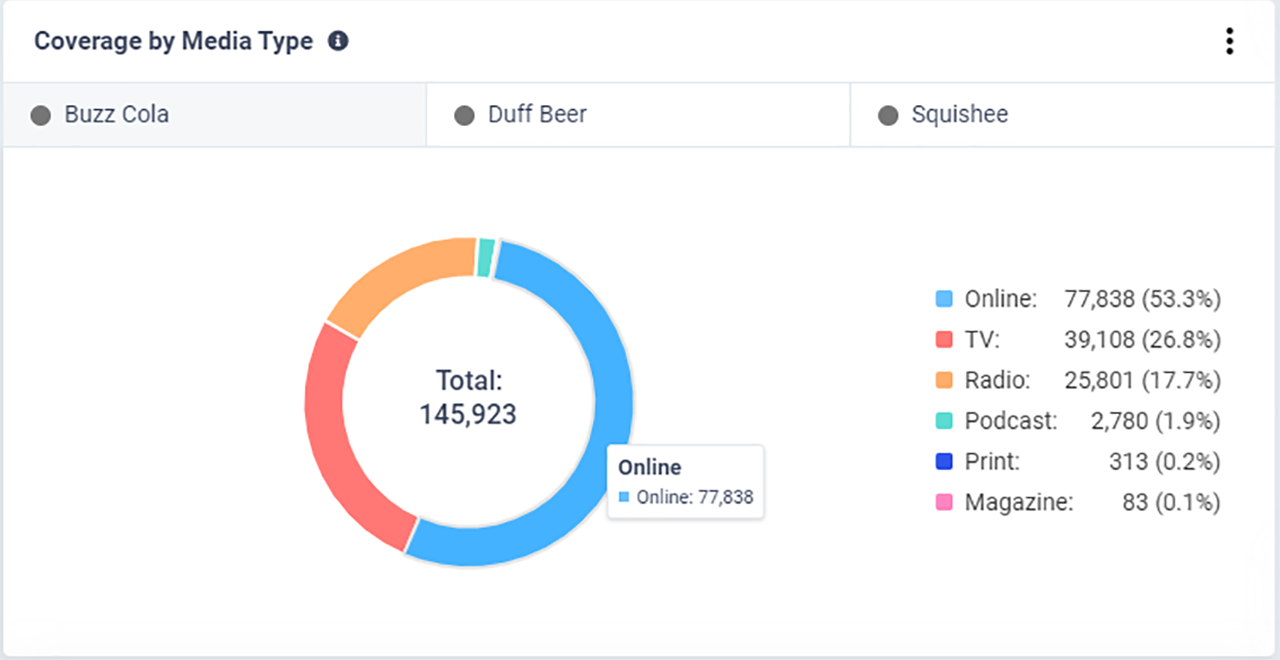
4. Share of Voice (SOV)
Share of voice (SOV) refers to the percentage of coverage your business or product (or any brand-related keyword you want to identify) compared to your competitors. It’s a good way to gauge presence in the market and can tell you how much (or little) your brand is in the media conversation.
By examining corresponding media coverage around the share of voice, it’s possible to find key differences with how your competitors are covered. This insight can help you make informed, strategic decisions going forward.
Below shows our Buzz Cola brand against other anonymized beverages over a 30-day period, both as an overall pie chart and how the share of voice evolved over time.
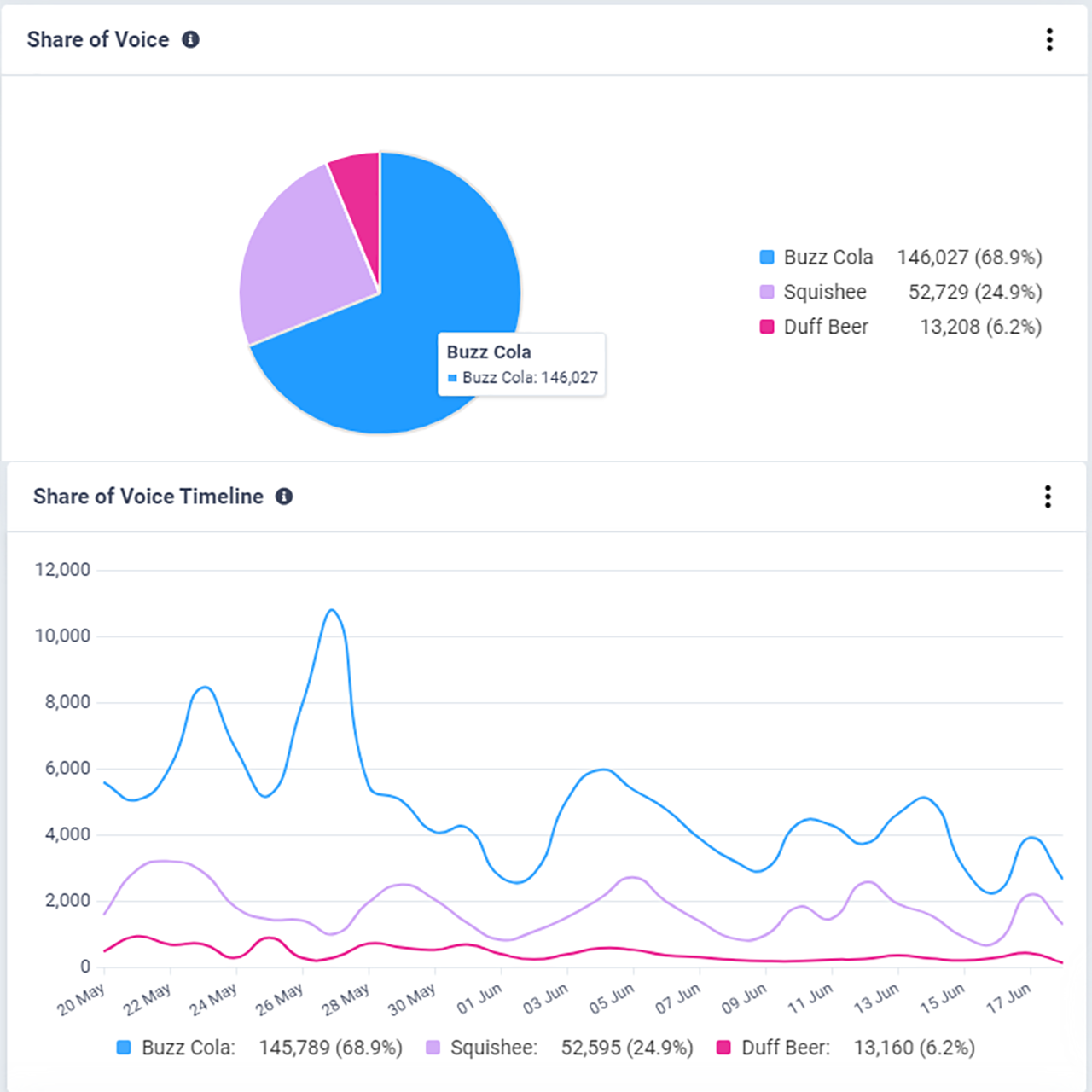
5. Social Media Mentions and Engagement
Social media is a key part of any digital PR campaign, and it’d be remiss not to include it in your KPIs. Many of today’s social platforms include PR analytics tools that help you see the number of shares and comments your posts are generating.
You can pair these metrics with insight from social media monitoring platforms to evaluate your overall performance. The chart below shows social media mentions measured with earned media, indicating any peaks and valleys where one metric may be driving the other.
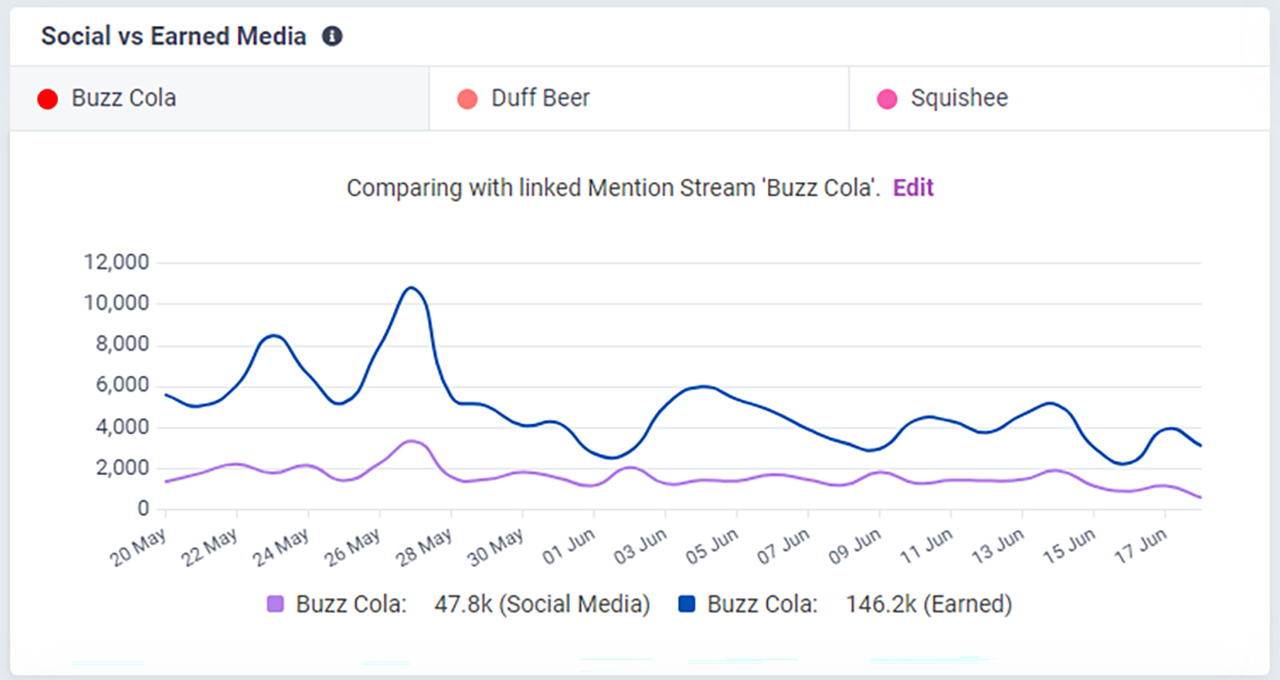
You may want to use social media mentions as a barometer for success, with the goal of increasing them gradually over time.
It’s also worth noting that some platforms, like CisionOne can dive deeper into social data and pull out themes and leading hashtags based on frequency of brand mentions, plus top X posts for certain keywords, and even the most frequent emoji used for your brand or product.
6. Sentiment Analysis
Brand sentiment can be a powerful reputation management metric when measured on a regular basis. Its frequent comparison also gives insight into the health of your organization's image. After all, communications professionals are the guardians of brand reputation.
Don’t forget: human verification is highly recommended, as nuance and context are not always perfectly interpreted by the artificial intelligence (AI) algorithms that power sentiment analysis.
There are a wide variety of media monitoring and PR measurement tools out there that use sentiment. CisionOne, for example, classifies coverage as positive, trending positive, neutral, negative, and trending negative. It also digs deeper with a unique feature called React Score, a natural language processing (NLP) technology, which identifies controversial, harmful, emotive, and spam content.
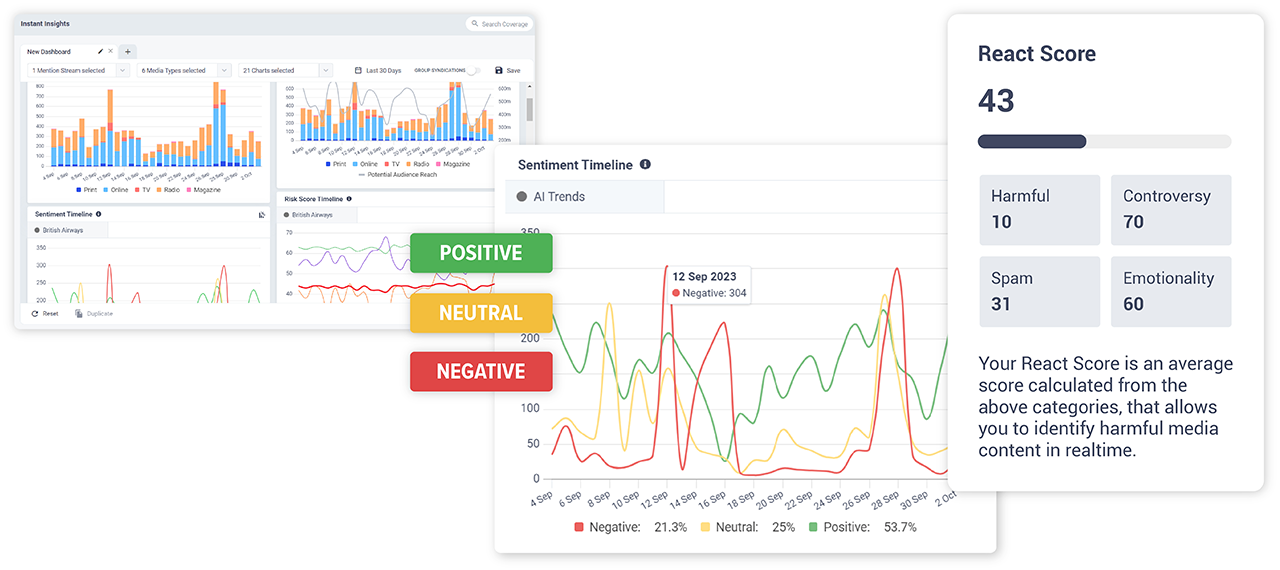
7. Media Outreach
Building relationships with journalists is at the core of public relations – and one way to stay on top of this is by building up-to-date media lists for your relevant sector or areas of coverage.
Many PR software platforms now include outreach tools that enable you to create media lists, send out pitches, craft press releases, and distribute them among key contacts – all in one tool.
Along with the amount of earned media coverage generated, you can also measure your progress with metrics like open rates and click-through rates. This helps you to identify your most effective pitches, and the media lists that contain the most valuable journalists.
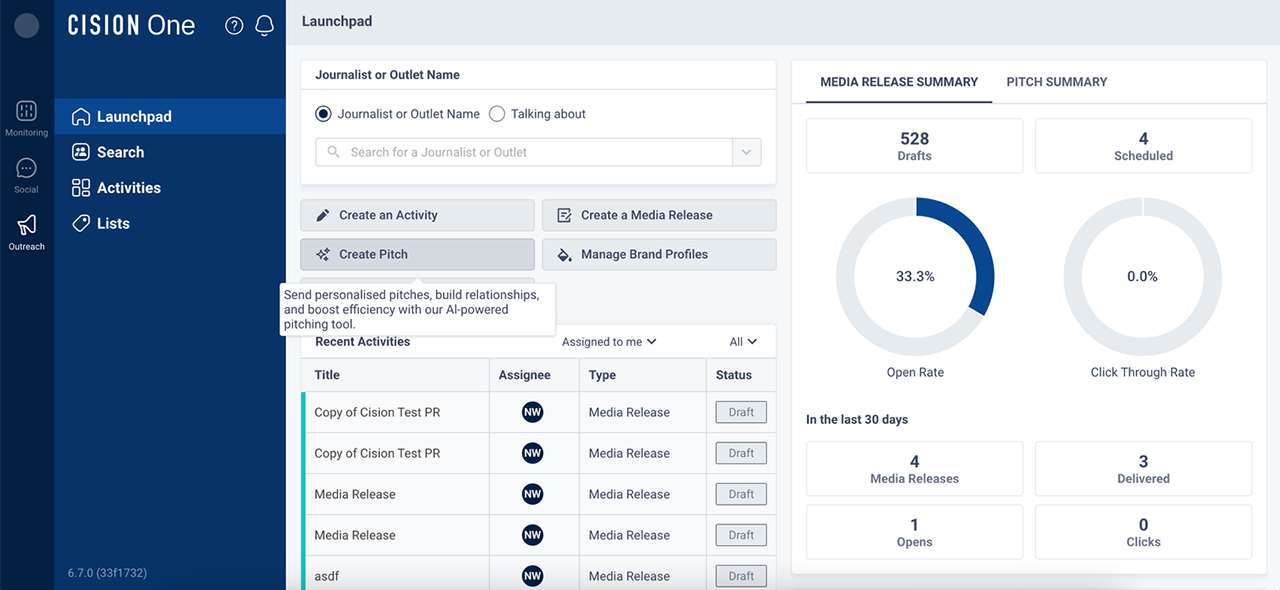
Final Thought
As an organization, it’s important to be fully aligned with your goals and ensure that you’re choosing the right KPIs to track. The above metrics provide quantifiable insights into your brand's visibility, reputation, and share of the media conversation, while social media and your outreach efforts also play a key role in modern PR.
Ultimately, the most effective measurement should look at PR KPIs over time to understand what's working, what's not, and where you can optimize your communications strategy.
See what an advanced, all-in-one PR and comms platform can do for your brand. Take a tour of CisionOne or schedule time to speak with an expert.




